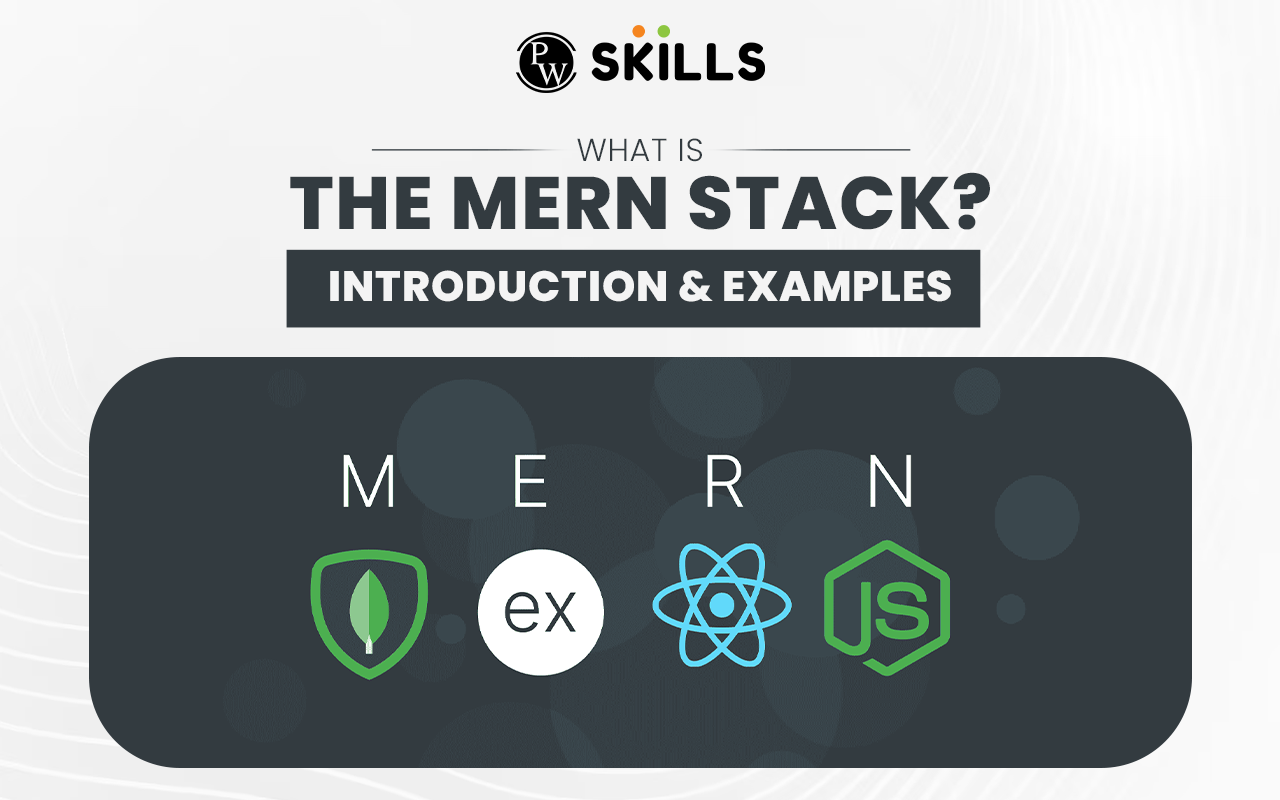Defining The Mern Stack Developer
The Mern stack developer is gaining popularity among web developers for its ease of use and flexibility. Comprised of four key technologies – MongoDB, Express.js, React, and Node.js – this combination forms a seamless, end-to-end solution for building dynamic and efficient web applications with the help of Mern stack developer.
At its core, MERN represents a collection of JavaScript-based technologies that work in tandem to facilitate both front-end and back-end development.
Synergy Among Technologies
The synergy among these technologies empowers mern stack developer to craft feature-rich applications with real-time data updates, seamless user experiences, and a scalable architecture. Examples of popular platforms built on the MERN stack include social media platforms, e-commerce sites, and productivity applications. The MERN stack’s adaptability, versatility, and thriving community of developers make it a go-to choice for modern web application development.
What Is the Mern Stack?
MERN stands for MongoDB, Express, React, and Node.js. It is one of the most popular JavaScript stacks for building modern full-stack web applications. The MERN stack is a popular JavaScript platform for building modern full-stack web applications. MERN stands for MongoDB, Express, React, and Node.js – the four core technologies that comprise the stack.
MongoDB is a scalable, high-performance, open-source NoSQL document database that’s very easy to use with JavaScript. It stores data in flexible, JSON-like documents and scales naturally with applications. Express is a fast, unopinionated, minimalist web application framework for Node.js. It provides a robust set of features for building web APIs and serves as the backbone of the application.
React is a JavaScript library for building user interfaces and maintaining component-based state. It is excellent for making interactive UIs and is one of today’s most popular front-end frameworks. Node.js is an open-source and cross-platform JavaScript runtime environment for developing server-side applications. It allows JavaScript to be used for both client-side and server-side web development.
Together, these technologies provide a powerful yet lightweight full-stack web development platform that is highly scalable and easy to develop with JavaScript. Their shared programming language makes data flow smoothly between front and back. The MERN stack provides an end-to-end solution and full-stack JavaScript environment for building data-intensive and interactive web applications.
These technologies provide a robust toolkit for building full-stack JavaScript applications that scale from small to large projects with the help of mern stack developer.
Also read: 12 Best Full Stack Web Development Courses in India
Mern Stack Vs Full Stack
A full-stack web developer works with both front-end and back-end technologies. The MERN stack allows developers to build full-stack applications using a single programming language, JavaScript. Mern stack developer can develop both client-side and server-side code using JavaScript. This uniformity makes development more accessible and reduces context switching compared to using different languages for the front-end vs the back-end.
Some other popular full-stack JavaScript frameworks include MEAN stack (MongoDB, Express, AngularJS, Node.js) and LAMP stack (Linux, Apache, MySQL, PHP).
Mern Stack Examples
To truly understand how the MERN stack works together, it helps to build a sample project that utilizes each stack layer. Let’s explore what a basic MERN example project might look like. We’ll create a simple blog application allowing users to view and add new posts. It will use MongoDB to store blog data, Express for API routes, React for the front-end interface, and Node.js to bring it all together. Let’s explore an MERN stack example project to understand how the technologies work together:
MongoDB Database
The first step is setting up the MongoDB database. We’ll need a database to store blog posts, which will be documented with a schema containing a title, body, tags, and timestamp. The database can be prepared with seeded data to populate on the app load for demonstration purposes. Alternatively, it can remain empty for users to settle. MongoDB is a popular open-source database that stores data in JSON-like documents with dynamic schemas. It works well with JavaScript applications.
Express API
Next, we’ll build a basic RESTful API with Express to perform CRUD (create, read, update, delete) operations on the blog post collection. Routes must be defined to GET all posts, GET a single post, POST a new post, PUT/PATCH to edit a bar, and DELETE a post. These routes will interact with MongoDB using the native driver. It can also add validation to formats like IDs and request bodies. Error handling ensures predictable responses. Express.js is a popular Node.js web application framework that provides robust features to develop web and mobile applications.
React Frontend
React components will make API requests for the front-end interface to populate and mutate blog data. React is a declarative, efficient, and flexible JavaScript library for building user interfaces. It is maintained by Facebook and used widely by enterprises.
A PostList component maps over posts from a GET request to display a list. A CreatePost form is submitted to a POST. An individual Post component loads a blog on the mount. Reusable UI elements like Nav Layout keep it organized and scalable. The local state manages form inputs.
Node.js
Node.js is a cross-platform and free open-source JavaScript run time environment that allows building server-side and networking applications. Finally, Node.js ties the MERN pieces together. It runs the Express API server to expose routes. It imports dependency injections for React rendering and implements server-side rendering if desired. The Mongodb driver connects Express methods directly to the database layer. With basic end-to-end tests, our full-stack MERN blog app is complete and demonstrates a real-world usage example of the technologies and design patterns.
Data flows from React components to the Express API, which interacts with MongoDB to perform CRUD operations on document data. It allows building full-stack JavaScript apps efficiently.
What is a Mern Stack Developer?
A MERN stack developer is experienced with the MERN technologies and capable of designing, developing, testing, and deploying full-stack web applications using the MERN stack.
Skills Required to be a Mern Stack Developer
- Expertise in JavaScript, HTML, CSS
- Firm grasp of React fundamentals like components, props, state, hooks, etc
- Proficiency in Node.js and ability to create RESTful APIs with Express
- Experience with MongoDB, document databases, and querying
- Understanding of software design patterns like MVC
- Version control skills using Git
- CI/CD pipeline knowledge
- Basic Server Administration
- Problem-solving and troubleshooting skills
Also read: MERN Stack – A Full Guide with Introduction & Examples
Roles and Responsibilities of a Mern Stack Developer
A MERN developer is involved in all phases of application development, including:
- Designing database schemas and APIs
- Developing reusable React components
- Creating REST endpoints with Express
- Integrating MongoDB for CRUD operations
- Debugging and testing code
- Building frontend interfaces
- Setting up deployment pipelines
- Ensuring scalability and performance
- Monitoring and maintenance
- Collaboration with other teams
What Is Mern Stack Developer Salary?
As the MERN stack continues to grow in popularity, the demand for experienced MERN stack developers is also increasing.
According to industry sources, the average base salary for a MERN developer in the United States is around Pound 85,000 annually. Experience level, location, employer, and skills can influence compensation. Top developers can earn over Pound 115,000.
With continuous learning and skill development, MERN stack developers have excellent career prospects across various industries and companies of all sizes. Overall, it is a great career path for JavaScript enthusiasts.
What Is Mern Stack Tutorial: Build A Simple App?
The best way to understand the MERN stack is by building a sample application. Here are the steps:
- Set up the MongoDB Database
Install MongoDB Community Edition, create a database and user.
- Initialize Node/NPM and install dependencies
Set up a project folder, initialize npm, and add Express, React, and MongoDB packages.
- Build API endpoints in Express
Create routes to perform CRUD operations from the React front end.
- Develop React Components
Build UI components using functional/class syntax with state/props.
- Integrate API using Axios
Make requests from React to Express API methods to fetch/save data.
- Add Validation and Error Handling
Implement form validation on the client and server. Gracefully handle errors.
- Deploy to Heroku
Add a Procfile and deploy the app to Heroku for the world to see!
Practicing with a sample project is the best way for a MERN developer to gain hands-on experience with the stack.
Conclusion
The MERN stack provides a productive environment for building modern JavaScript applications. As usage grows, developers who learn MERN will have growing opportunities. If you are currently a JavaScript developer, or want to become a MERN stack developer learning MERN stack developer course is a fantastic choice to expand your skills and career prospects. What are you waiting for? Get a course and become a MERN stack developer.
Also read: Features Of Mern Stack Development Services You Should Know
FAQs
What is MongoDB used for in the MERN stack?
Storing data in flexible JSON-like documents.
What web framework does Express provide?
A robust set of routing and middleware features.
Why is React commonly used with MERN?
It allows building interactive UIs in a component-based way.
Which language can be used across front-end and back-end?
JavaScript, since Node.js runs JavaScript on the server-side.
Where can full-stack MERN apps be deployed?
Platforms like Heroku, Amazon Web Services, and digitalocean.




